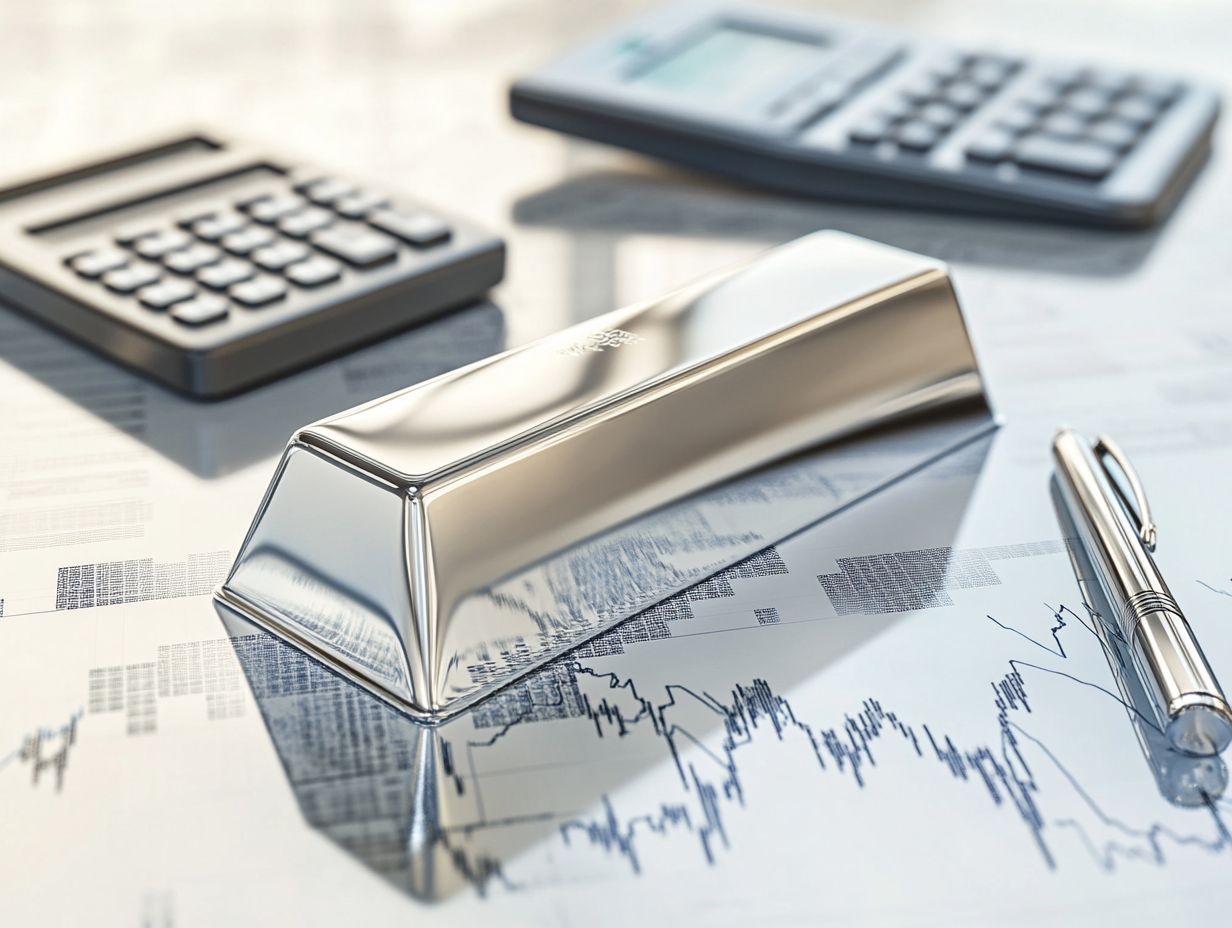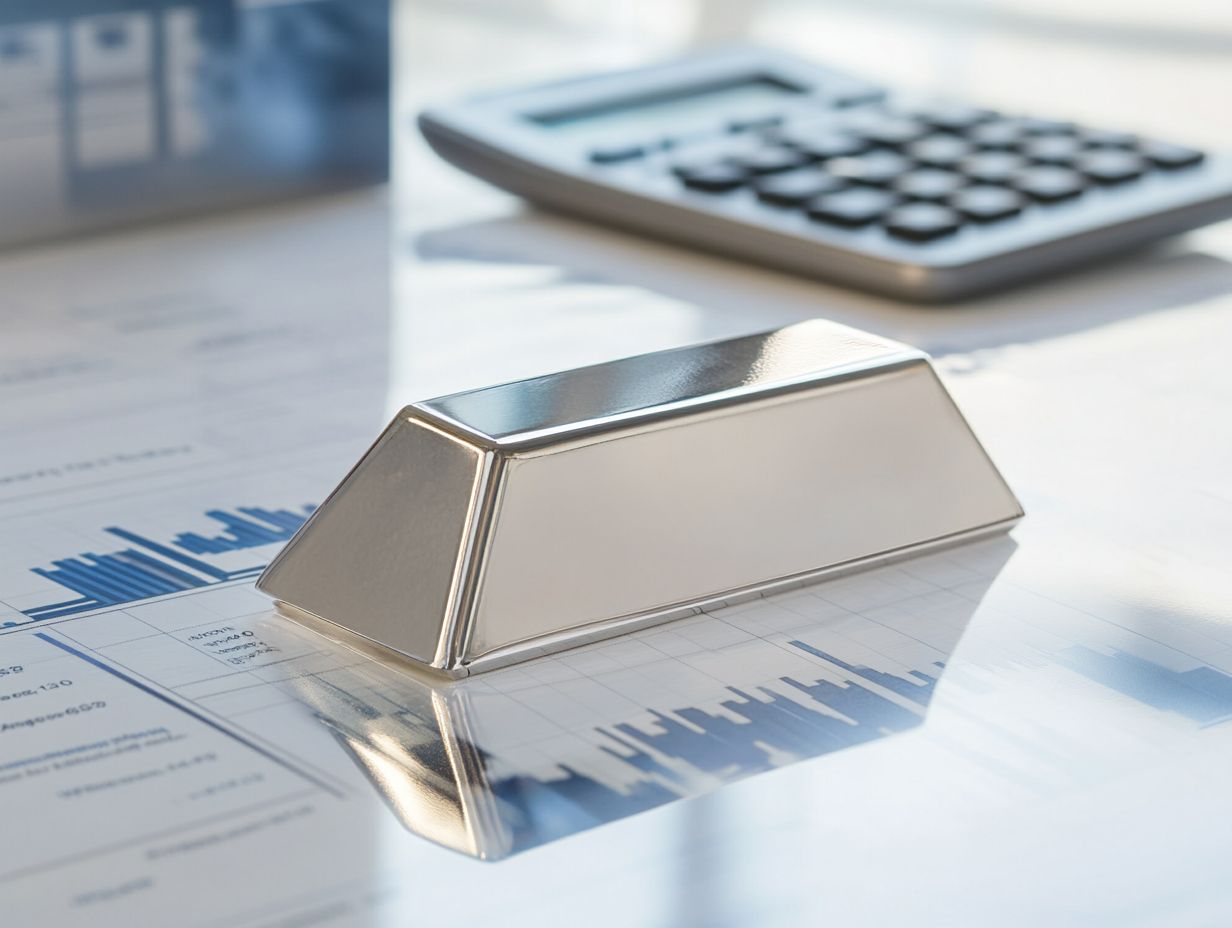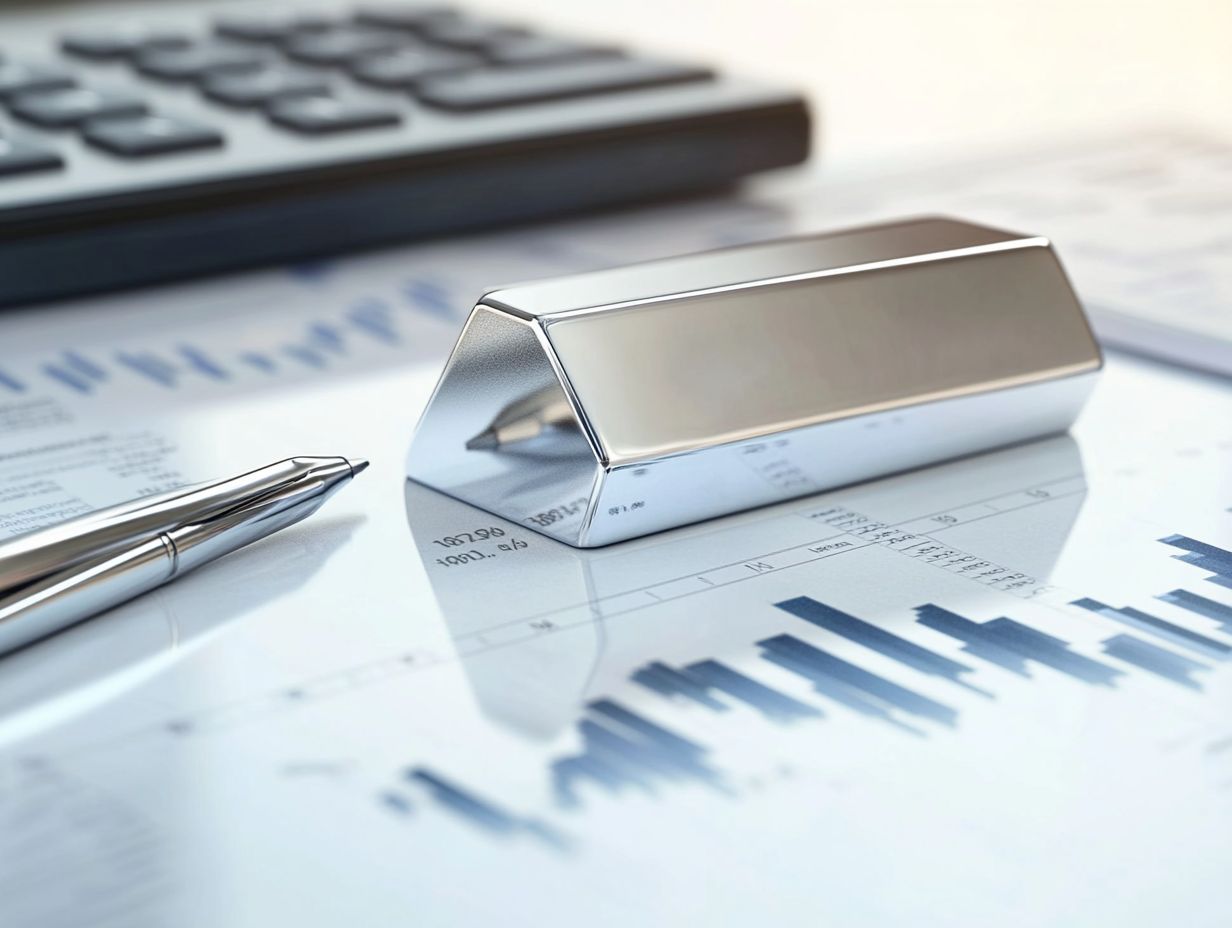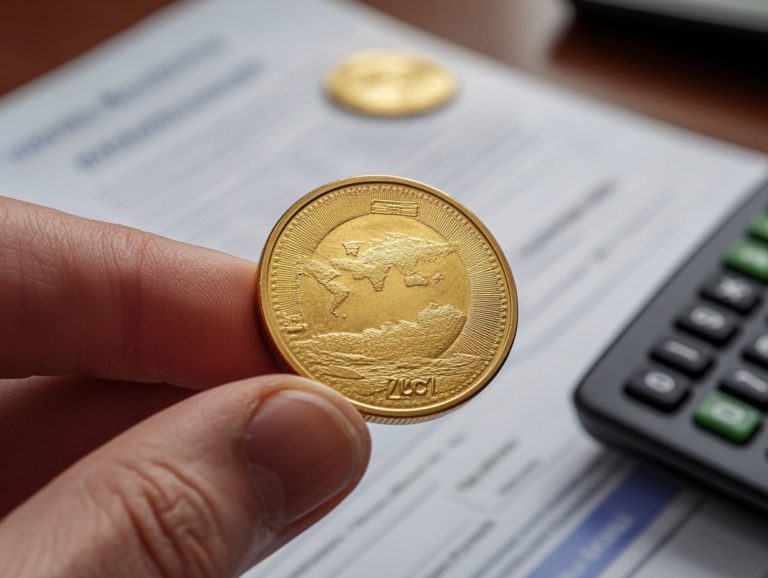What is the Future of Platinum Prices?
Platinum, frequently eclipsed by gold and silver, holds a pivotal position in numerous industries and investment portfolios.
To understand platinum prices, you need to look at several key factors. This guide explores the current landscape of platinum prices, recent trends, and future predictions.
You ll also discover the industries that rely on platinum, investment opportunities, and crucial considerations to keep in mind as you navigate this dynamic market.
Immerse yourself in the intricacies of platinum pricing and its influence on investments.
Contents
Key Takeaways:

- The future of platinum prices is uncertain due to various factors such as demand, supply, and economic conditions.
- Experts predict a potential increase in platinum prices in the long term, driven by the growing demand for clean energy and technological advancements.
- Investing in platinum requires careful consideration of market factors and a strategic approach to mitigate risks and maximize potential returns.
Understanding Platinum Prices
Understanding platinum prices requires analyzing critical factors, including the dynamics of supply and demand and prevailing market trends.
In the H1 2024 forecast, you can expect platinum prices to be shaped by increasing automotive demand, especially driven by the emerging hydrogen economy (a shift towards using hydrogen as a fuel source), along with insights from the World Platinum Investment Council (WPIC). This deep dive gives you the power to make informed investment decisions and illuminates the intricate complexities behind platinum’s market fluctuations.
Factors that Influence Platinum Prices
Several key factors influence platinum prices, including supply constraints, shifts in demand from the automotive industry, and broader economic indicators that shape investment strategies.
These elements intertwine to create a landscape where the metal’s value can fluctuate significantly. For instance, supply chain disruptions, often arising from geopolitical tensions or mining challenges, can restrict availability and drive prices upward.
Your understanding of the evolving needs within industries particularly the automotive sector is essential. Advancements in technology are changing how platinum is used, especially in catalytic converters (devices that reduce harmful emissions in cars).
Economic trends, such as inflation and currency valuation, impact investment attitudes, making insights from the World Platinum Investment Council (WPIC) invaluable. Their analysis shows how rising demand for platinum in emerging sectors like the hydrogen economy could reshape future price expectations, underscoring the metal’s multifaceted significance.
The Current State of Platinum Prices
The current landscape of platinum prices showcases a sophisticated interplay between fluctuating market trends and diverse demand across various sectors, especially as H1 2024 approaches.
Recent trends underscore the influence of supply chain disruptions and the ongoing transformation in the automotive industry, both shaping shifts in platinum demand and pricing strategies.
As an investor, it s essential to stay informed and closely monitor these developments to adeptly navigate the volatile platinum market.
Recent Trends and Fluctuations

Recent trends in platinum prices show notable volatility, shaped by various market factors such as economic indicators and industrial demand.
In recent months, you may have noticed sharp rises and falls in platinum prices. These fluctuations reflect the complex dynamics of global economic recovery, supply chain disruptions, and shifts in consumer behavior.
For example, after reaching a peak of approximately $1,300 per ounce in early 2023, prices dipped to about $950. This decline was mainly driven by reduced automotive production and a slowdown in manufacturing across key sectors.
As industries shift towards sustainable solutions, the demand for platinum especially in catalytic converters displays mixed signals. As an investor, it’s crucial to monitor these trends, as market fluctuations can significantly influence your strategies and potential returns.
Predictions for the Future of Platinum Prices
Predictions for the future of platinum prices come from expert forecasts considering various factors, such as market demand, limited supply, and evolving investment strategies as you approach H1 2024.
Analysts are closely watching key indicators that may influence these prices. They offer you actionable insights to navigate the complexities of this precious metal’s market.
Expert Forecasts and Analysis
Expert forecasts provide critical insights into the projected trajectory of platinum prices, especially as you approach H1 2024. Pay close attention to supply and demand these factors can change the game!
By monitoring reports from the World Platinum Investment Council (WPIC), you can uncover valuable information about shifts in mining output and expected demand for platinum in sectors like automotive catalytic converters and jewelry.
These reports highlight trends that can greatly affect market behavior, such as global political issues impacting production regions and technological advancements expanding the metal’s industrial applications.
Understanding these dynamics helps you predict price movements and gives you the power to make informed decisions that align with your long-term strategies in the ever-fluctuating commodities market.
Potential Impact on Industries and Investments
The impact of platinum prices on various industries and investments is significant, especially as demand from the automotive sector and the hydrogen economy evolves.
Understanding fluctuations in platinum prices is vital for adapting to market changes now! This knowledge is essential for navigating the complexities of the market effectively as an investor.
Industries that Rely on Platinum

Several industries depend on platinum, with the automotive sector as a prime example, utilizing it in catalytic converters. The hydrogen economy also uses platinum in fuel cells, showcasing its essential role.
These sectors underscore how crucial platinum is for reducing harmful emissions in vehicles and enhancing energy efficiency in renewable energy systems. As these industries progress, they become increasingly sensitive to fluctuations in platinum prices.
Automotive manufacturers are relentlessly seeking innovative ways to optimize platinum usage, exploring alternative materials and enhancing fuel efficiency. Meanwhile, the hydrogen sector is evaluating the cost-effectiveness of platinum-based technologies amid rising prices.
These adaptations reshape production and supply chain strategies and significantly influence investment decisions and market forecasts for stakeholders.
Investment Opportunities and Risks
Investment opportunities and risks associated with platinum prices are shaped by the ever-evolving market trends and industry developments, especially as we approach H1 2024.
As you monitor the global economy, be aware of how factors like supply chain issues, advancements in electric vehicle technology, and changing jewelry demands significantly influence platinum’s market dynamics.
Recent fluctuations in commodity prices and geopolitical tensions add complexity to the landscape, prompting careful analysis of your positions.
By understanding these elements, you can create strategies that not only help you weather potential downturns but also allow you to capitalize on emerging opportunities in the sector.
Staying aware of trends and engaging in proactive planning is essential for making informed decisions about when to enter or exit the platinum market.
Factors to Consider When Investing in Platinum
When investing in platinum, it s essential to keep a close watch on several key factors, including current platinum prices, market trends, economic signs, and forecasts for the first half of 2024.
A comprehensive understanding of these elements empowers you to make informed decisions in a potentially volatile market.
Market Factors and Strategies
Market factors such as global economic indicators, supply chain issues, and technological advancements play a crucial role in shaping platinum prices.
These elements dictate the supply and demand balance and influence investor sentiment regarding platinum as a viable asset.
For instance, fluctuations in manufacturing data can indicate shifts in industrial demand, particularly from sectors like automotive, where platinum is vital for catalytic converters components that reduce harmful emissions in cars.
Geopolitical tensions and trade policies can disrupt supply chains, leading to price volatility. Pay attention to currency movements; a stronger dollar often makes platinum pricier for foreign buyers, influencing market dynamics.
By adopting a comprehensive approach to monitoring these key factors, you can significantly enhance your investment strategies.
Frequently Asked Questions

What is the future of platinum prices?
The future of platinum prices remains uncertain, influenced by various factors such as supply and demand, economic conditions, and global events. However, experts predict that demand for platinum will continue to grow in industries including automotive and jewelry, which could potentially increase prices in the long run.
What are the current trends in platinum prices?
Currently, platinum prices are on a downward trend due to oversupply and weaker demand. Nevertheless, there are expectations for a potential rebound in prices as demand in the automotive industry is anticipated to rise due to stricter emission regulations.
How does the supply of platinum impact its prices?
The majority of the world’s platinum supply comes from South Africa and Russia; any disruptions or changes in production in these countries can significantly impact platinum prices. For example, labor strikes in South Africa have historically led to decreased supply and increased prices.
What role do economic conditions play in platinum prices?
Economic conditions, such as inflation and interest rates, also affect platinum prices. In times of economic instability, investors often turn to precious metals like platinum as a safe haven, driving prices up. Conversely, a strong economy can decrease demand for platinum, resulting in lower prices.
How do global events affect platinum prices?
Global events, such as political unrest or trade tensions, can impact platinum prices as well. These events can create uncertainty and volatility in the market, leading to price fluctuations. For instance, the ongoing trade war between the US and China has negatively affected demand for platinum, causing prices to decline.
What Influences Platinum Prices?
Platinum prices are influenced by various factors. Supply and demand play a significant role, but other elements can also impact costs.
Economic conditions, global events, changes in technology, and environmental regulations are crucial. For instance, if new technology reduces the need for platinum, demand may drop, leading to lower prices.
On the other hand, if regulations require more platinum use, prices may rise. Understanding these dynamics can help you navigate the platinum market better.














